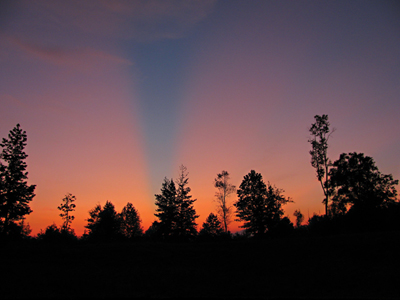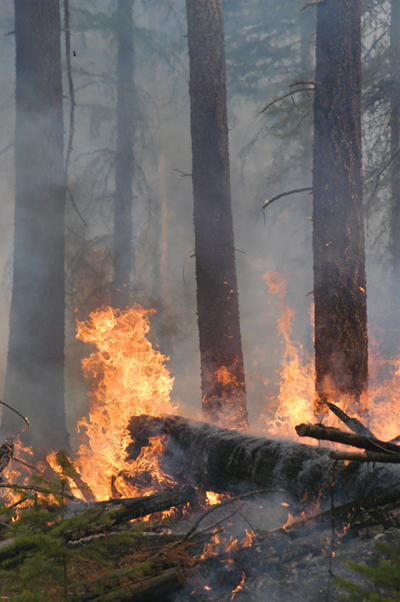
Weather woes
By James Careless
Features ICS & IMS TrainingIn October, insurance-industry executives told participants at a conference in Montreal that climate change is to blame for the increase in the number of storms, floods and hail events that have resulted in a surge in insurance claims filed in Canada. Martin-Eric Tremblay of the Co-operators Group Ltd.
In October, insurance-industry executives told participants at a conference in Montreal that climate change is to blame for the increase in the number of storms, floods and hail events that have resulted in a surge in insurance claims filed in Canada. Martin-Eric Tremblay of the Co-operators Group Ltd. said that insurance companies now expect to pay out claims on catastrophic events four times more often than they did in the 1980s.
 |
|
| Insurance companies expect to pay out claims on catastrophic events, such as tornadoes, four times more often than they did in the 1980s.
|
“Years ago we were not even thinking about having hurricanes on the shores of the Atlantic (provinces),’’ Tremblay, Co-operators’ senior vice-president, told The Canadian Press.
In its 2009 report, the Insurance Bureau of Canada said insurance claims related to severe weather, even when adjusted for inflation, have doubled every five to 10 years since the 1950s.
The IBC says on its website (www.ibc.ca) that earthquakes, hurricanes, tsunamis, forest fires, tornados, ice storms and severe rain storms are happening more often than ever before.
“Canada is not immune to this trend,” the website says. “Many of us remember the devastation of Hurricane Juan, which hit Nova Scotia and Prince Edward Island in 2003, and the sheer horror of the forest fires that swept across British Columbia the following summer. In 2005, Toronto and the surrounding area were hit with a severe rainstorm and tornadoes that led to the second-largest insurance payout in Canada’s history. The largest Canadian disaster was the ice storm of 1998.”
For Canadian firefighters, the implications of climate change and/or global warming seem obvious: warmer temperatures that lead to longer, hotter summers and extend the wildfire season; and warmer water that extends the hurricane season and its scope. The logical response is to increase the abilities of Canadian fire departments to fight forest fires and to improve hurricane emergency planning in the Maritimes.
It’s not that simple, says weather guru Dave Phillips, Environment Canada’s straight-talking senior climatologist. For one thing, a warmer climate doesn’t necessarily mean consistently warmer summers, as evidenced by the damp, cool weather in eastern Canada this year, says Phillips.
According to Phillips, climate change is a fact of life on Earth but it’s not the relatively new phenomenon that environmentalists and Al Gore have embraced.
“Some people think our climate is normally stable and consistent but that’s never been the case,” Phillips said in an interview. “Temperatures have risen and fallen over time due to a number of factors. What can be said, however, is that the current rise is occurring during a period where humans have been putting greenhouse gases into the atmosphere. It seems apparent that this is having an influence on climate change but it is not necessarily the only reason that temperatures are going up.”
Complicating matters is the fact that “you have to be able to distinguish between what constitutes weather and what constitutes climate,” Phillips says. “Just because the previous summer’s weather was cool and damp does not prove that the climate isn’t getting warmer, nor does it prove that it is. Climate change is not something that can be deduced from weather, at least not in the short term. It takes years of comparative data to spot trends.”
Phillips says Canada’s climate from the 1940s to 1970s “was one of the most stable, quiet climates that we have seen for centuries.” In other words, the apparently reliable cycle of seasons that adult Canadians grew up with was an anomaly: winters during which the onset of cold temperatures and nasty weather varies from year to year are closer to the historical norm.
Still, there’s some predictability to all this science of climate change and global warming.
Last year – 2009 – was a terrible year for spring flooding along the Red River but floods are a normal part of life in Manitoba, says Ken Sim, deputy chief of operations with the Winnipeg Fire Department. That said, he’s concerned about the increasing strength and severity of wind storms and tornadoes in the province.
“These wind storms are coming closer to Winnipeg than any of us can ever remember,” he said. “There has been a change in the pattern of these storms in a relatively short time. It’s a little unusual for a community like Winnipeg to be concerned with building construction and collapse.”
 |
|
| The summer of 2009 was long, hot and expensive for the Wildfire Management Branch of the British Columbia Forest Service with 3,091 fires consuming more than 229,000 hectares. The branch spent $387.4 million fighting fires in one of its most expensive years on record.
|
Sim doesn’t know what’s causing the increase in wind storms. But his department is training to keep up with the changes in the local climate.
“We are now putting more time into training for building collapses [and] learning how to find victims and extricate them safely in the wake of a tornado,” he said. “We have a large fire resource capability to deal with such problems, and we can count on assistance from our local Urban Search and Rescue team, which is funded by Ottawa.”
The summer of 2009 was long, hot and very expensive for the Wildfire Management Branch of the British Columbia Forest Service with 3,091 fires consuming more than 229,000 hectares. The branch spent $387.4 million fighting fires in one of its most expensive years on record.
Global warming? Not necessarily, says Bruce Young, the branch’s manager of wildfire operations.
“Although the 2009 fire season was above average, we credit the hot, dry weather to the ongoing La Nina/El Nino cycle, which governs the surface temperature of the Pacific Ocean,” he said. “We had an early spring this year thanks to El Nino, which typically points to a hot, dry summer. That’s what happened.”
That said, Young notes that the branch has done some analysis and determined that B.C.’s fire seasons are starting earlier and ending later, which he says is a more logical effect of warming or changing climate.
The branch uses the La Nina/El Nino cycle to predict patterns. But ultimately, what really guides it is the habit of planning for a worst-case scenario, Young said.
“We don’t have the ability to predict with certainty in March that we are going to have a bad fire season, so we have to prepare for it. But we also can’t go to our government and ask for extra funding each year based on a worst-case scenario, which is why we liaise with other jurisdictions to back us up when our worst fears are realized.”
Young’s statement underlines the challenge of trying to anticipate the weather. When so many immediate problems demand government attention, obtaining funding for potential situations, without scientific proof, is difficult, if not impossible. Instead, it makes sense to try to prepare to meet all threats, including climate change.
In Nova Scotia, climate change affected the 2009 forest fire season differently
“We had quite a slow season,” said Mark Saywood, acting fire management supervisor with the Nova Scotia Department of Natural Resources. Normally, Nova Scotia has about 300 forest fires a year but this year’s total was 168.
Saywood says the weather affected the number of fires, but in a good way. “We had quite a wet spring,” he said. “Things then began to dry out, only to be soaked by Hurricane Bill and Tropical Storm Danny in August. That effectively put an end to the fire season.”
Indeed, Phillips says last summer was the wettest summer on record in Atlantic Canada – the wettest in 62 years.
Still, says Saywood, it’s important to consider the positive and negative effects of global warming.
“The possible effects of climate change are considered in our planning process as a possible factor that may extend our shoulder season over the long term.
“In recent years, we have had fires that have started earlier in the season in the last week of March. This may be a natural cycle and not necessarily directly linked to global warming. If you look back through fire history, you will see that some fire seasons start earlier in the spring and some fire seasons extend later into the fall.”
A longer fire season means not just potentially more fires, but more people and money needed to fight them. Nova Scotia’s Department of Natural Resources is responsible for hiring seasonal fire crews: “If the need to hire our crews on early or extend their term arises due to an extended shoulder season in the future, that would be something we would consider,” says Saywood. However, he hopes that a mix of careful, planning, plus close co-operation with local fire departments, would allow his government to meet the threat, rather than “having to put a lot more money into that.”
Clearly, there is debate about the impact of climate change on Canadian fire fighting but there’s agreement about how to deal with whatever Mother Nature throws our way.
“We can’t be sure that what is resulting in long, hot summers is climate change or some other short-term factor,” says Environment Canada’s Phillips. “But what we can do is prepare for all eventualities, by predicting, monitoring and reacting to weather trends as they occur.”
James Careless is a freelance writer living in Ottawa and a regular contributor to Fire Fighting in Canada.
Print this page